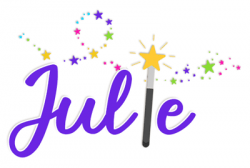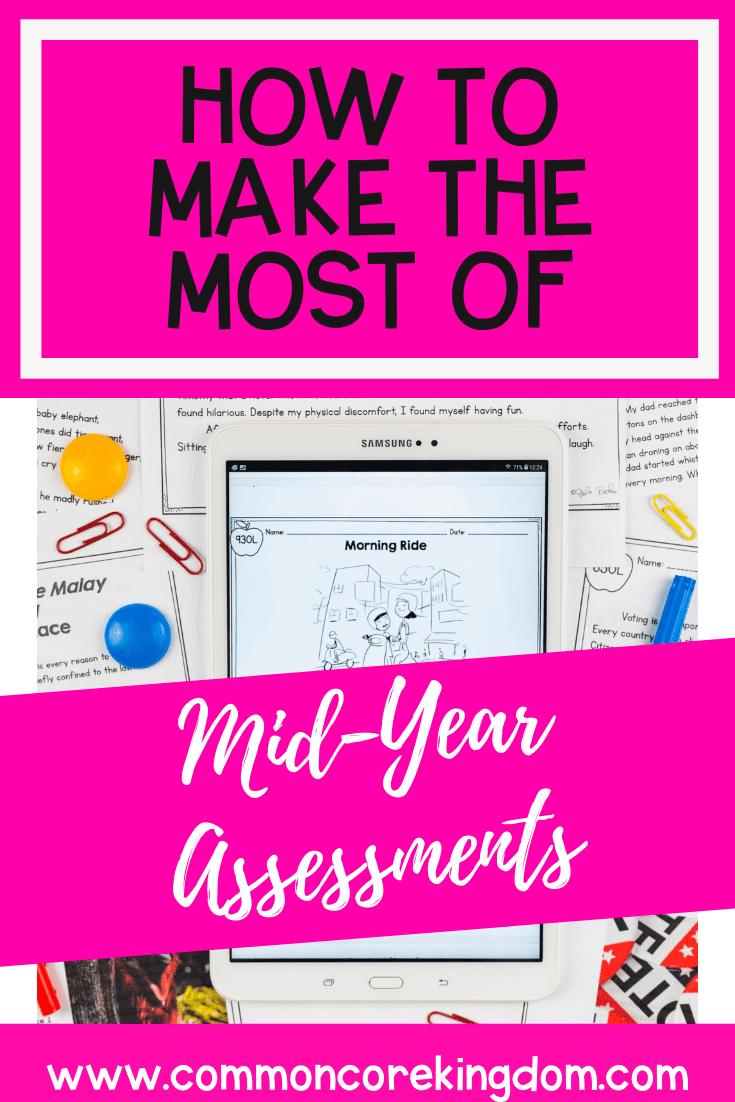Most teachers administer large assessments at the beginning of the year for a baseline. Districts give standardized tests toward the end of the year to measure student progress. As a classroom teacher, I always felt that a mid-year assessment was the most important evaluation tool for checking my students’ progress. The mid-year benchmark assessment tells teachers what skills the students have mastered, and which ones still need to be taught or retaught. The data teachers receive from this assessment should inform instruction in the upcoming months to best prepare students for the next grade or for state testing. Here are some tips on how to make the most of mid-year assessments.
I recommend administering the mid-year benchmark after the winter holidays, sometime in January. This gives you time to desegregate the data and modify your instruction.
Be sure you are using an assessment that covers all the standards or skills that you teach, even if you haven’t covered some of them yet. For reading, the assessment should be an equal balance of fiction and nonfiction passages. The passages should span the entire grade level. My benchmark assessments have certified Lexile levels to ensure they meet state testing rigor.
Be sure the assessment includes an appropriate number of questions for each standard to show students’ mastery. For example, if the assessment only has one main idea question, that does not provide enough data to truly know if the student has mastered the standard. I recommend at least four questions per skill or standard.
The mid-year assessment will likely be quite lengthy if it covers enough questions to assess all the standards. Ensure you allocate plenty of time for your students to complete this assessment in an authentic testing environment. You can time your students similarly to how they would be timed for state testing, but I prefer to allow students to take all the time they need. At this point in the year, we are still teaching and reinforcing the importance of finding text evidence and checking work, so I do not want students to feel rushed. Mid-year, students are still building their stamina. Taking a long test can be challenging. For this reason, I like to break the assessment up into manageable chunks. I recommend students complete mid-year benchmark assessments in one-hour chunks over a few days.
How many times after you give an assessment do you leave it and forget it? I’ll be honest; in my early years of teaching, this happened regularly. It is especially likely if someone else is mandating the tests. However, using the assessment data is the most crucial step. If you don’t desegregate your data and use it to inform your teaching, the entire assessment was a waste of time for both you and your students.
Don’t waste another minute! As soon as possible, dive into the assessments to begin analyzing student data. Here are the important data points you want to look for:
Student overall percentage score: Keep in mind; this is only mid-year. Do not expect students to be completely proficient at this time. I categorize my students into 4 groups of proficiency.
Proficient students are right where they need to be. They still may need some remediation or reteaching in particular skills. Still, they are on track overall with your current teaching and can continue to progress forward at your regular pace. Students who are close to proficient may need a little more remediation to get them where they need to be. Students who are below proficient will likely need a lot of focus, small group instruction, reteaching, and even general reading comprehension support. Students who score well below proficient are likely reading well-below grade level. For these students, I recommend spending most of your time focusing on small group guided reading, fluency, and possibly basic phonics and decoding.
Using this data, I modify my curriculum map for the upcoming months. The skills or standards with the lowest proficiency should be placed on your calendar first. Usually, these include any skills or standards you have not taught yet. Any other standards which show low overall proficiency should also be placed on your calendar.
Use this data to form small strategy groups. Make lists of students who need reteaching of specific skills. Conduct these small groups like guided reading, except with more targeted instruction and materials that focus on the skill at hand.
For students who are in the “well-below proficient” category, I recommend continuing to focus on guided reading, fluency, or phonics/ decoding instruction depending on their gaps.
The key is to desegregate your data, so it is meaningful to YOU. How can you use this information to modify and change your instruction? Keep in mind, the answer will not be the same for every class. If you have a green and blue chart, you likely can continue most of your instruction as usual. This is excellent news! Or, if you are like me, and most of your chart looks red and orange, know you have work to do, but you still have time!
This was me. Every year. Now, of course, I had some other colors sprinkled in. But usually, a large percentage of my class was in red or orange. It would stress me out to see other teachers with green and blue or even rainbow charts. But the fact is, this wasn’t a reflection of my teaching. I was always in the inclusion classroom and I had ESOL students. So, it was to be expected many of my students would not be proficient yet. It just meant I had work to do and a larger responsibility to be even more intentional with my instruction and time.
Here is where I stress, once again, the importance of small groups. Mid-year, small group and one-on-one instruction encompassed much of our time. This was the best way to reach my students who needed the most help and remediation. For students close to meeting grade-level standards, I modeled, guided, retaught, and released responsibility to build my students’ skills and confidence. We honed in on every skill we could. For my students who were well below, I knew my time was best spent bumping up their general reading abilities as much as possible. We did phonics, decoding, fluency, comprehension, and vocabulary lessons through meaningful and engaging texts. While some of these students would not be able to tell me the text structure of the book they read, they were at least getting closer to being able to actually read the text.
Mid-Year benchmark assessments are key tools you can use to plan and modify your instruction for the remainder of the year. Using benchmarks can help you be more intentional with your students and time.
You can check out my Benchmark Assessments that feature easy data analytics tools in both printable and digital solutions for 2nd, 3rd, 4th, and 5th Grade.
Looking for more tips on how to close gaps before standardized state testing? Check out my blog post here. You can visit me on TPT here.

We strive to create resources that empower teachers and transform student success. We create skill-focused resources that promote critical thinking, enhance student engagement, and incorporate diversity. Our goal is to develop the tools teachers need to reach their students and foster a lifetime of learning.

